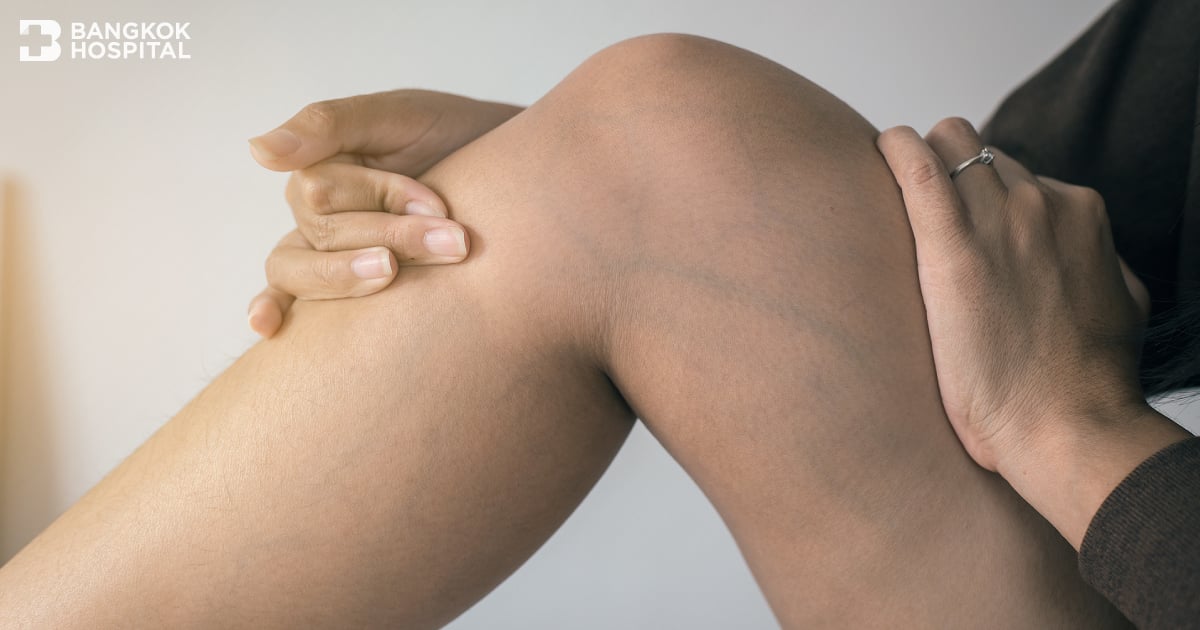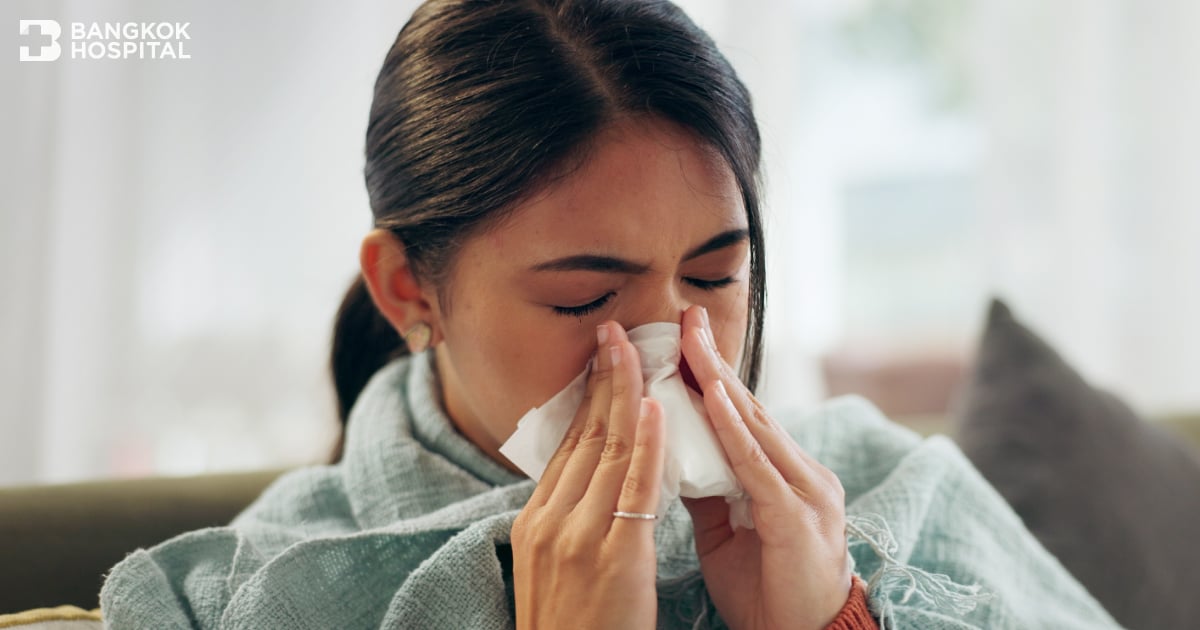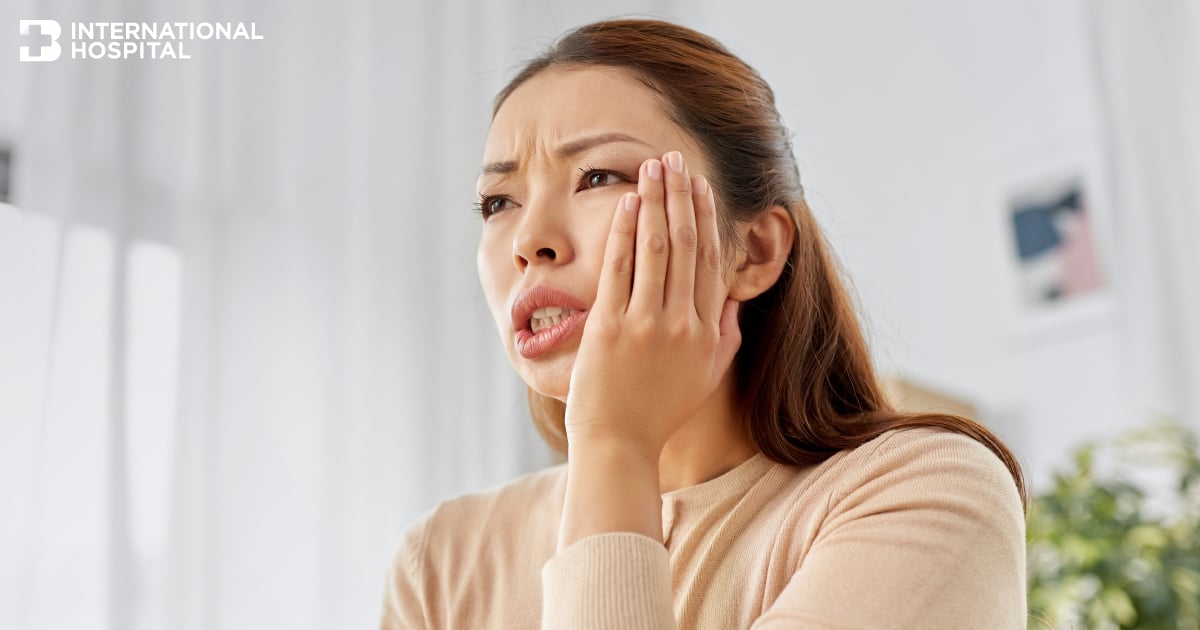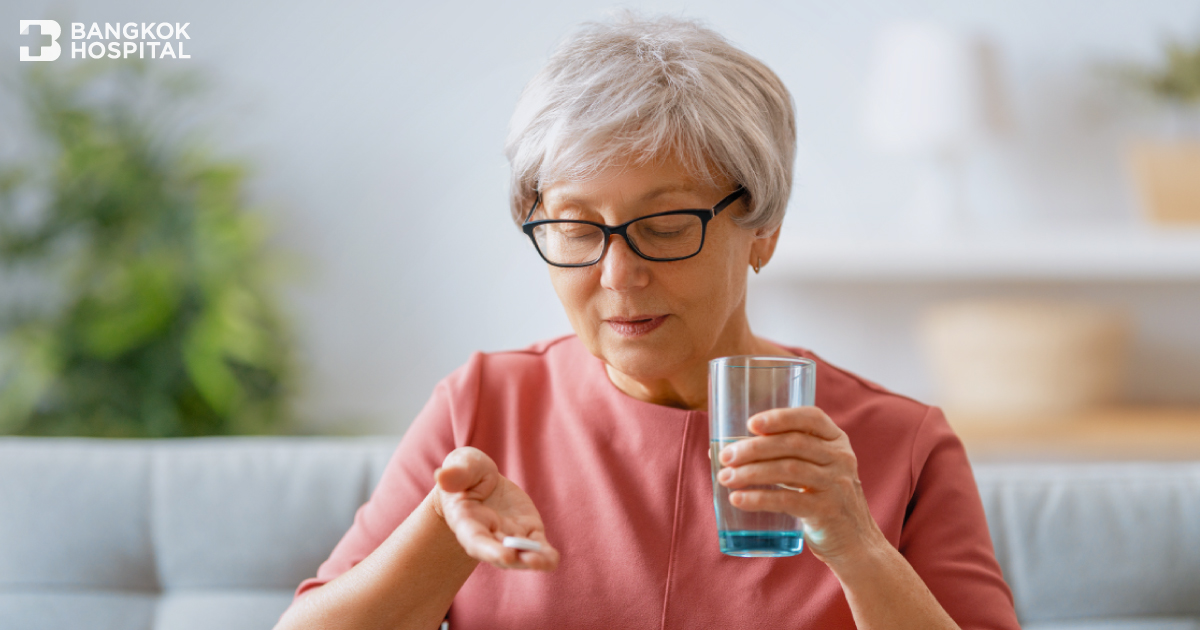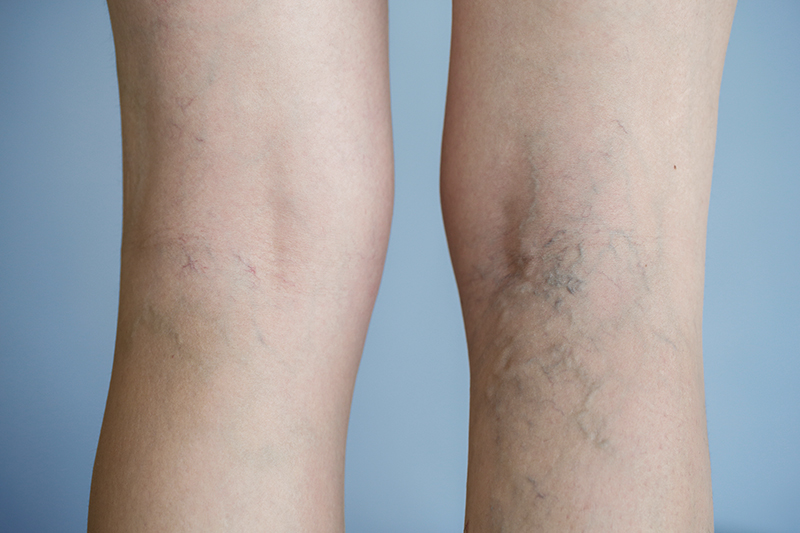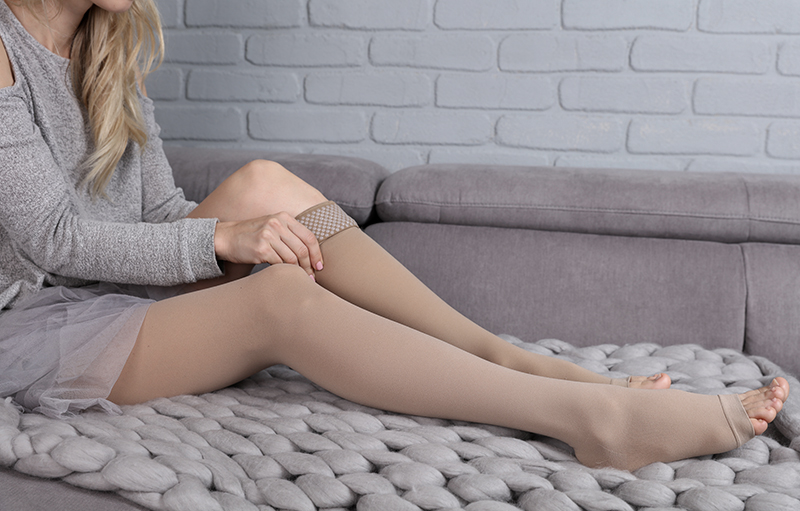Venous diseases range from mild condition such as varicose vein to fatal diseases including deep vein thrombosis and chronic venous insufficiency. Causes of venous diseases might include stagnation of blood flow due to prolonged immobility, blood vessel injury, conditions that increase the tendency for blood to coagulate such as a familial deficiency in anti-clotting factors and related health conditions such as pregnancy. Knowing the signs and symptoms of venous diseases results in early detection and timely treatment.
Get to know veins
Veins are blood vessels with thin-walled structures that carry blood from the body toward the heart for recirculation. Within the veins, especially those of the legs are valves, flap like structures made of elastic tissue. The valve’s function is to keep blood moving in one direction against gravity. Muscle contractions in lower legs act as pumps and vein walls help blood returning to the heart. As a regular pattern, tiny valves in veins open as blood flows toward the heart and close to stop blood from flowing backward.
In our body, systemic veins are classified into superficial veins (located in the fatty layer under the surface of the skin) and deep veins which are found in muscles or along bones in the arms and legs.
- Superficial veins: Superficial veins are veins those are close to the surface of the skin. These veins are visible in green, purple or spider veins under the skin. In patients with severe coronary heart disease in which coronary artery bypass grafting (CABG), a procedure to improve poor blood flow to the heart is indicated, cardiac surgeons might consider taking these superficial veins as vein grafts to perform CABG. Due to the complex structure, superficial veins can develop wide range of health-related problems. However, the diseases of superficial veins are normally mild to moderate. Fatal condition caused by these veins seems to be rare. Common disease of superficial veins is varicose vein.
- Deep veins: Deep veins are located underneath the deep fascia of the lower limb and found in muscles or bones, accompanying the major arteries. Deep veins can cause serious health problems, resulting in significant morbidity. Most frequently found disease of deep veins is deep vein thrombosis.
Common venous diseases
The most commonly found venous diseases include varicose vein, deep vein thrombosis (DVT) and chronic venous insufficiency.
Varicose Veins
Varicose veins are characterized by enlarged or twisted veins caused by weakened or damaged vein walls and abnormal vein valves especially in the legs. As a regular pattern, tiny valves in veins open as blood flows toward the heart and close to stop blood from flowing backward. If these valves are weakening or damaged, blood can flow backward and pool in the veins, causing the veins to stretch or twist, leading to varicose veins. Without early and appropriate treatment, varicose veins potentially develop other serious complications such as chronic ulcer and bleeding. Degree of severity varies from painless spider veins to leg pain, swelling foot and leg with the presence of veins that appear twisted and bulging, often look like cords on the leg. Skin color might turn to be dark brown or purple with rough and dry skin texture. This might lead to skin inflammation and infection. Other signs and symptoms also include an achy or heavy feeling in the legs, burning sensation and swelling in the lower legs. Pain typically gets worse after hanging the legs down and after sitting or standing for a long time.
Deep Vein Thrombosis (DVT)
Deep vein thrombosis (DVT) occurs when a blood clot (thrombus) forms in one or more of the deep veins in the body, usually in the legs. Deep vein thrombosis can potentially develop due to certain medical conditions that affect how blood clots. It usually happens during prolonged immobilization such as after surgery or an accident, after traveling for long time and bid-ridden status. When the lower extremity are immobilized up to 4-6 hours, it leads to inactivity of the ankle pump mechanism. As a result, muscles of the lower extremity cannot properly contract, therefore blood circulation is impaired and the risk of blood clots in the legs significantly increases. Deep vein thrombosis signs and symptoms include swelling in the affected leg (rarely, there is swelling in both legs), pain in the leg which often starts in the calf with cramping or soreness, red or discolored skin on the leg and feeling of warmth in the affected leg. Deep vein thrombosis can be life-threatening since blood clots in veins can break loose, travel through the bloodstream, lodge in the lungs and block blood flow, (known as pulmonary embolism), eventually leads to insufficient blood supply to the lung and sudden death. Due to pulmonary embolism can be fatal, it is important to watch for signs and symptoms of a pulmonary embolism and seek immediate medical attention. Signs and symptoms of a pulmonary embolism include sudden shortness of breath, chest pain or discomfort that worsens during taking a deep breath or coughing, feeling lightheaded or dizzy, or fainting, rapid pulse and coughing up blood.
Chronic Venous Insufficiency
Chronic venous insufficiency is a condition that occurs when the venous wall and/or valves in the leg veins do not function effectively, making it difficult for blood to return from the legs to the heart. Chronic venous insufficiency causes blood to pool or collect in these veins, called stasis. In regular pattern, veins return blood to the heart from all the body’s organs. To reach the heart, the blood needs to flow upward from the veins in the legs. Calf muscles and the muscles in the feet need to contract in order to squeeze the veins and push the blood upward. To keep the blood flowing up, and not back down, the veins contain one-direction valves. In chronic venous insufficiency, these valves become damaged, allowing the blood to leak backward. Valve damages may be induced by aging, extended sitting or standing or a combination of aging and reduced mobility. When the veins and valves are weakened to the point where it is difficult for the blood to flow up to the heart, blood pressure in the veins is elevated for long periods of time, leading to chronic venous insufficiency. Symptoms that might indicate chronic venous insufficiency include swelling in the lower legs and ankles, especially after extended periods of standing, aching or tiredness in the legs, leathery-looking skin on the legs, flaking or itching skin on the legs or feet and stasis ulcers (or venous stasis ulcers). If left untreated, the pressure and swelling increase until the tiniest blood vessels in the legs, known as capillaries burst. As a result, the overlying skin takes on a reddish-brown color and becomes very sensitive to being broken if bumped or scratched. At worst, this leads to ulcers, open sores on the skin surface. These venous stasis ulcers can be difficult to heal and can become infected. Being aware of suspected signs and symptoms of chronic venous insufficiency remains essential. The earlier it is diagnosed and treated, the better chances of preventing serious complications.
Risk factors and symptoms of venous diseases
|
|
Varicose vein | Deep vein thrombosis | Chronic venous insufficiency |
|
Symptoms: |
|
|
|
|
Risk factors: |
|
|
|
Diagnosis of venous diseases
Suspected signs and symptoms that might indicate venous diseases include pain, heavy feeling, tenderness and swelling in the affected leg which usually starts from the calf, cramping or soreness in the affected leg, burning sensation or warmth in the legs. If any of these manifestations occurs especially after extended immobilization e.g. long flight or travelling in the car, medical attention must be sought as soon as possible. Diagnostic examination includes
- Medical history including onset of symptoms, pain characteristics and other health-related conditions;
- Physical examination; and
- Vascular ultrasound that uses sound waves to evaluate the body’s circulatory system and help identify blockages in the arteries and veins and detect blood clots. This noninvasive technique helps identifying cause of venous diseases therefore the appropriate treatment could be further provided accordingly, resulting in minimized risks of recurrence.
Treatment of venous diseases
To treat venous diseases, selected treatment options entirely depend on presenting signs and symptoms, disease severity and overall health condition of individual patients. Treatments include:
1. Conservative Treatment
In mild cases of varicose veins, wearing compression stockings with pressure gradient all day is often the first approach. It steadily squeezes the legs and helps veins and leg muscles circulate blood more efficiently. The degree of compression can be adjusted. The medical benefits of compression stockings include helping to maintain blood flow, reducing pressure in the veins as well as alleviate pain and discomfort feeling. Wearing compression stocking has shown to improve venous flow, speed up wound healing and assist in preventing wound infection. Compression stockings can also be worn after healing to keep blood flowing properly and minimize the chances of wound recurrence. In addition, lifestyle modification must be also applied including weight reduction if obese, regular exercise and keeping the legs elevated during the day.
2. Injection
- Injection of anticoagulant: In case of pulmonary embolism develops, treatment depends on the size and location of the blood clot. Some injection drugs that can break up small clots and prevent clots from getting bigger may be prescribed including anticoagulants (blood thinner) and clot dissolvers (known as thrombolytics). These drugs works by speeding up the breakdown of a clot. They are typically reserved for emergency situations because serious side effects may include dangerous bleeding problems.
- Sclerotherapy: During the procedure with ultrasound guided system, small-and medium-sized varicose veins up to 3 mm. are directly injected with a solution (generally a salt solution) or foam that scars and closes those veins. The solution irritates the lining of the blood vessel, causing it to collapse and stick together and the blood to clot. Sclerotherapy does not require anesthesia and hospitalization. It can be done as an out-patient procedure without requirement of food and fluid restriction prior to the procedure. After sclerotherapy is performed, it is highly recommended to the patients to continually wear compression stockings in order to reduce chances of recurrence.
3. Endovascular Therapy
Minimally invasive surgery uses to treat varicose veins with smaller incisions sized 2-3 mm, leading to less pain and lowered complications e.g. minimized damages to surrounding nerve and muscle as well as faster recovery time. Patients do not need to be hospitalized since it can be performed as day case surgery. There are 2 options;
- Endovenous Laser Ablation or EVLT or Endovenous Radio Frequency (EVRF): A thin tube (catheter) will be inserted into an enlarged vein. The tip of the catheter heats with either the use of radiofrequency or laser energy together with ultrasound image-guided system without the need of general anesthesia and surgery. As the catheter is pulled out, the heat destroys the vein by causing it to collapse and seal shut. This procedure is the preferred treatment for larger varicose veins. Before performing this procedure, general health assessment is required as well as food and fluid restriction. Incision size is up to 2 mm. in length. After procedure is completed, elastic bandage will be used to wrap up the affected areas and the compression stockings will be furthered used. This approach is highly recommended in patients with mild to moderate severity of varicose veins without history of deep vein thrombosis.
- Catheter-directed sclerotherapy: Non-heat procedure is used with Mechanochemical Ablation (MOCA). It is performed in a similar manner to thermal ablation (EVTA), although no heat is involved. A special rotating catheter is advanced into the vein and a drug called a sclerosant is injected through the catheter to close down the vein. This procedure is performed as an alternative to thermal ablation or a thermal procedure is not feasible due to the vein’s proximity to a nerve. It is highly suggested to repeat treatments for 2-3 times in order to prevent recurrent varicose veins. Due to smaller incisions, this procedure provides cosmetic benefits in patients who are concerned about scars.
4. Endoscopic vein surgery
In an advanced case involving leg ulcers if other techniques fail, surgery might be highly considered.
- Endoscopic vein surgery for varicose vein:
This is primarily recommended in patients with large and misshaped varicose veins, varicose veins which are too close to superficial skin that does not allow sclerotherapy to be performed and varicose veins accompanying with deep vein thrombosis which catheter-assisted procedures are not applicable. Before surgery begins, vascular ultrasound will be used to identify the affected veins and other abnormalities. The size of incision around groin folds ranges from 3 to 4 cm. in length. After surgery, wearing compression stockings is essentially recommended to reduce the swelling, increase healing process and minimize chances of recurrence.
- Endoscopic vein surgery for deep vein thrombosis
In case that other approaches fail and patients have experienced severe leg pain that largely disturbs their daily life, endoscopic vein surgery to treat deep veins will be further recommended. Vascular surgeons operate the affected veins in the legs to repair the damaged valves or replace with veins derived from the arms in case that valves are entirely affected and cannot be repaired. This surgical approach significantly helps to alleviate pain, resulting in Improved quality of life.
Warning signs and symptoms to seek medical attention
If these symptoms present, medical assistance should be provided as soon as possible;
- Leg pain or swelling leg with tenderness, heavy feeling accompanying with cramping, irritation or itchiness.
- Spider veins or cords in the affected leg
- Swelling leg (particularly only one side) with unknown cause especially after extended immobilization e.g. long flight, long sitting in the car. More attention is needed in patients with underlying diseases e.g. diabetes, hypertension, chronic kidney disease and cardiovascular disease.
- Severe pain in the line of affected veins
- Static ulcer in the ankle, leathering-looking skin or chronic ulcer that does not heal.
Venous diseases can be effectively treated if the early diagnosis can be made in time. Do not ignore any possible signs and symptoms. Medical attention with appropriate treatments must be provided as soon as possible.

